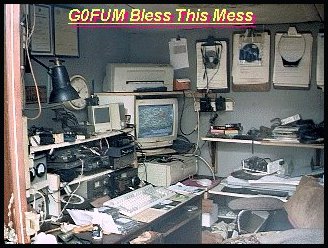
Probably the most important safety precaution in the amateur station arises from the use of high voltages. While much amateur equipment uses transistors operating from a 13.5V supply, many high-power HF, VHF and UHF linear amplifiers using valves operating at voltages over 2000V are in use.
It is not possible to define a voltage which is 'safe to touch' - no voltage source should ever be touched deliberately. The effects of an electric shock of a particular voltage depend on so many factors, from the source of the voltage to the state of health of the unfortunate person involved.
It is therefore best to consider any voltage above 50V as dangerous and to act accordingly. Probably the three most important precautions are:
Using a low-voltage but high-current power supply must not be allowed to lull one into a state of false security. The input voltage is 240V. and this can be fatal under some circumstances. The high current capability may be sufficient to generate molten metal if the supply is accidentally shorted to earth by, say, a ring on one's finger.
The electromagnetic compatibility aspects of the protective multiple earthing system of house wiring are dealt with in Chapter 9. The installation of PME systems started in the mid 'seventies. It would seem likely therefore that the majority of houses in UK do not use PME. Before basing any grounding or safety precautions in your station on PME, it is essential to check with your local electricity board whether or not your house wiring uses PME.
The 'Safety Recommendations for the Amateur Radio Station' and 'Mobile Safety Recommendations' which follow should be studied carefully.

Photo 12.1. A typically busy and crowded radio amateurs 'shack'